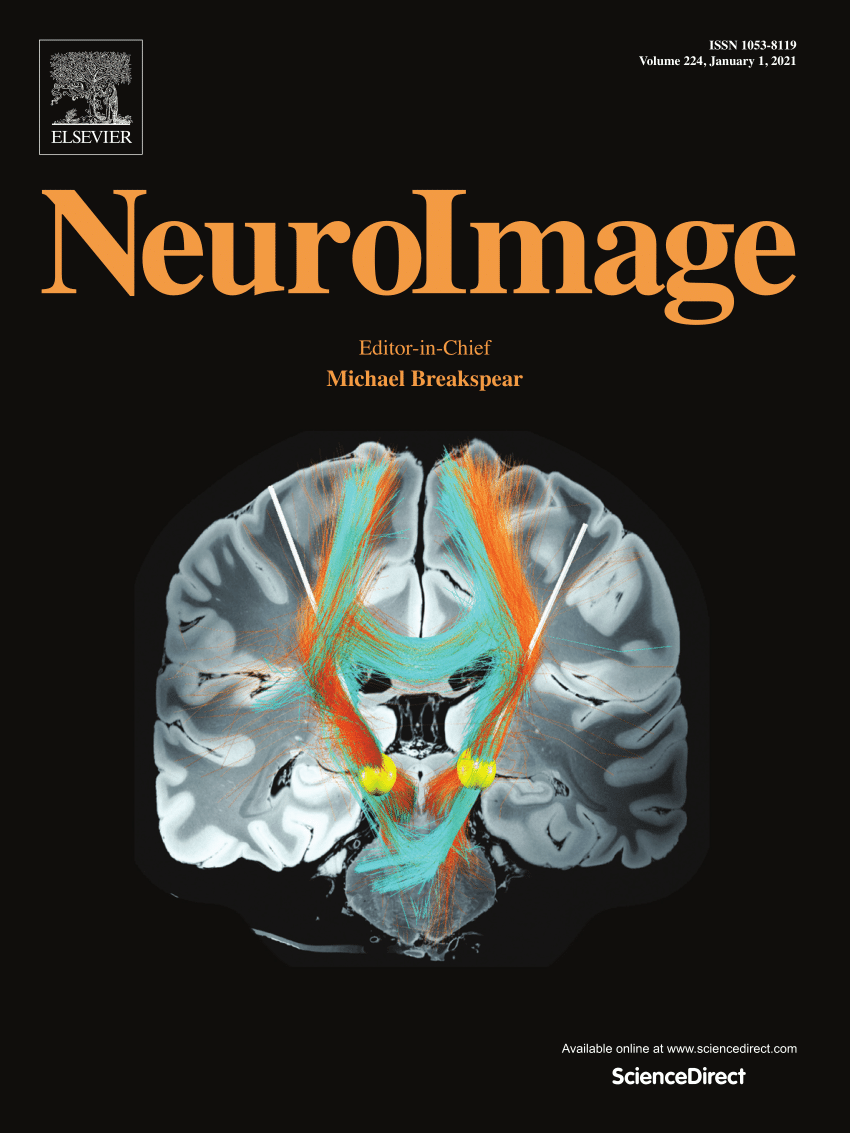Altered brain network dynamics during rumination in remitted depression
IF 4.7
2区 医学
Q1 NEUROIMAGING
引用次数: 0
Abstract
Rumination is a known risk factor for depression relapse. Understanding its neurobiological mechanisms during depression remission can inform strategies to prevent relapse, yet the temporal dynamics of brain networks during rumination in remitted depression remain unclear. Here, we collected rumination induction fMRI data from 42 patients with remitted depression and 41 healthy controls (HCs). Using an energy landscape approach, we investigated the temporal dynamics of brain networks during rumination. The appearance frequency (AF) and transition frequency (TF) metrics were defined to quantify the dynamic properties of brain states. Patients during remission showed higher levels of rumination than HCs. Both groups exhibited four brain states during rumination, which consisted of complementary network group activation (states 1 and 2, states 3 and 4). In patients, the AFs of and reciprocal TFs between states 1 and 2 during rumination were significantly increased, while AFs of states 3 and 4 and reciprocal TFs involving states 1–3, 1–4, 2–3, and 2–4 were decreased, both when compared to HCs and relative to patients themselves during distraction. Moreover, we found that for patients, the AF of state 1 was negatively correlated with rumination levels and marginally positively associated with attention, while the AF of state 2 was negatively associated with performance on attention tasks. Our study revealed altered dynamic characteristics of brain states composed of network groups during rumination in remitted depression. Additionally, the findings suggest that heightened self-focus linked to rumination may impair the brain's ability to efficiently allocate attentional resources.
抑郁症缓解期反刍过程中脑网络动态的改变。
沉思是抑郁症复发的一个已知风险因素。了解抑郁症缓解期间的神经生物学机制可以为预防复发提供策略,但抑郁症缓解期间大脑网络的时间动态尚不清楚。在这里,我们收集了42名抑郁症缓解患者和41名健康对照(hc)的反刍诱导fMRI数据。利用能量景观方法,我们研究了反刍过程中大脑网络的时间动态。定义了出现频率(AF)和过渡频率(TF)指标来量化脑状态的动态特性。缓解期患者的反刍水平高于hc患者。两组在反刍过程中均表现出四种脑状态,即互补网络组激活(状态1和状态2、状态3和状态4)。在患者中,反刍过程中状态1和状态2之间的af和互反tf显著增加,而状态3和状态4以及状态1-3、1-4、2-3和2-4之间的af和互反tf在分心时均相对于hc和患者自身降低。此外,我们发现,对于患者来说,状态1的心房颤与反刍水平呈负相关,与注意力呈微正相关,而状态2的心房颤与注意任务的表现呈负相关。我们的研究揭示了抑郁症缓解期反刍过程中由网络群组成的大脑状态的动态特征的改变。此外,研究结果表明,与反刍有关的高度自我关注可能会损害大脑有效分配注意力资源的能力。
本文章由计算机程序翻译,如有差异,请以英文原文为准。
求助全文
约1分钟内获得全文
求助全文
来源期刊

NeuroImage
医学-核医学
CiteScore
11.30
自引率
10.50%
发文量
809
审稿时长
63 days
期刊介绍:
NeuroImage, a Journal of Brain Function provides a vehicle for communicating important advances in acquiring, analyzing, and modelling neuroimaging data and in applying these techniques to the study of structure-function and brain-behavior relationships. Though the emphasis is on the macroscopic level of human brain organization, meso-and microscopic neuroimaging across all species will be considered if informative for understanding the aforementioned relationships.
 求助内容:
求助内容: 应助结果提醒方式:
应助结果提醒方式:


